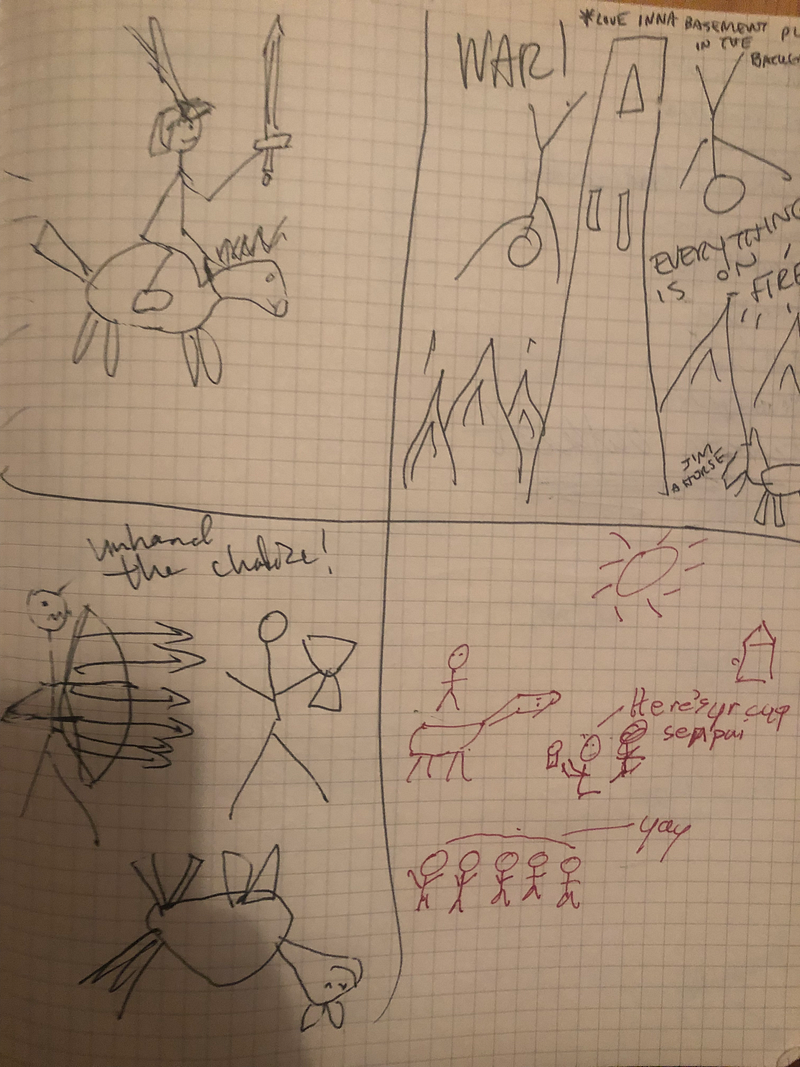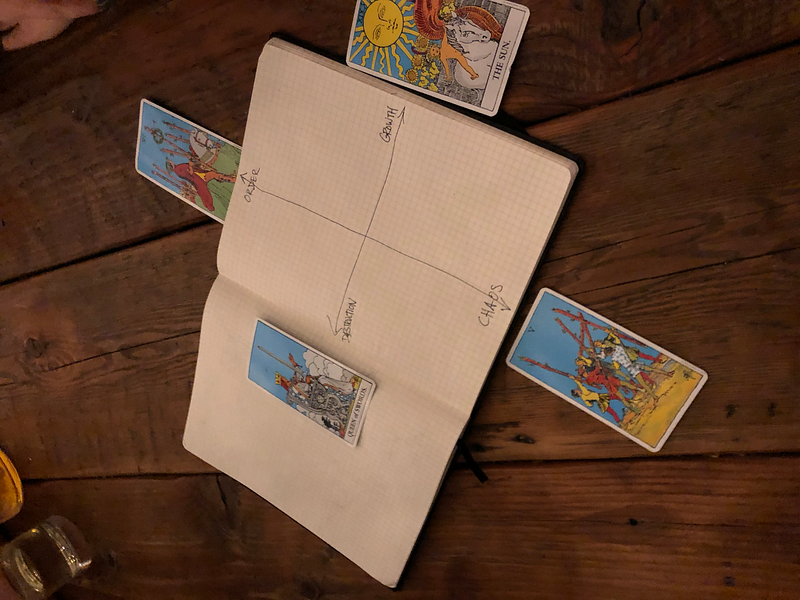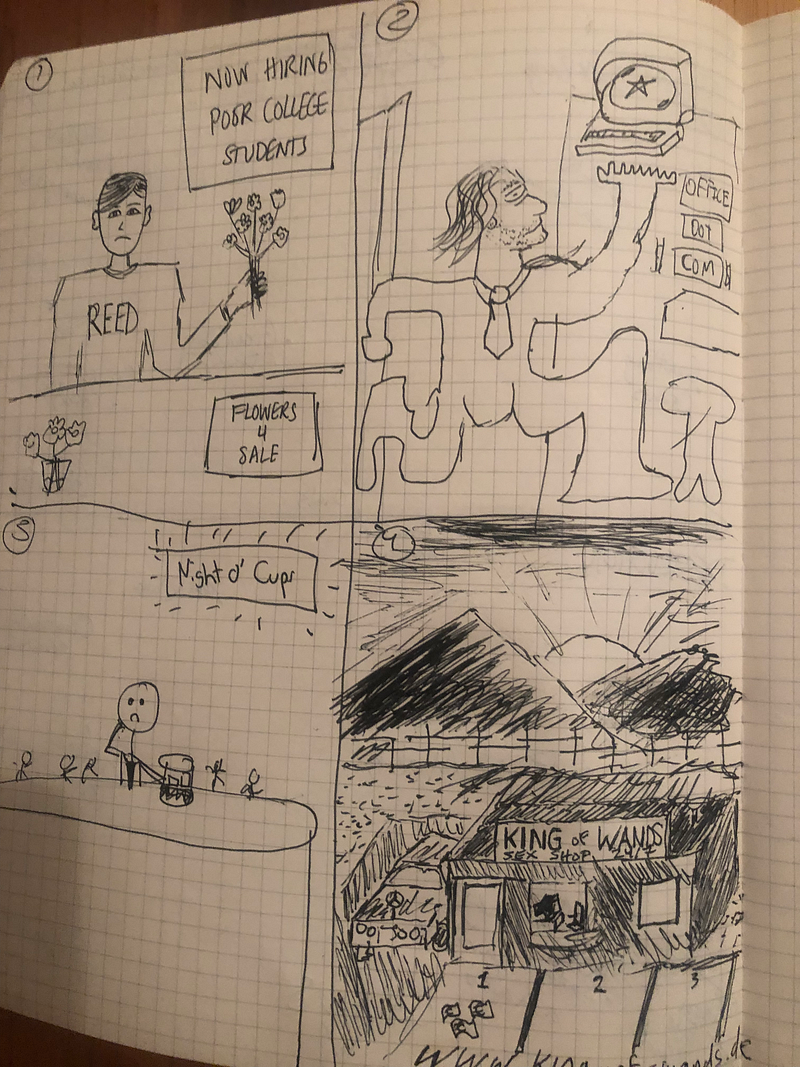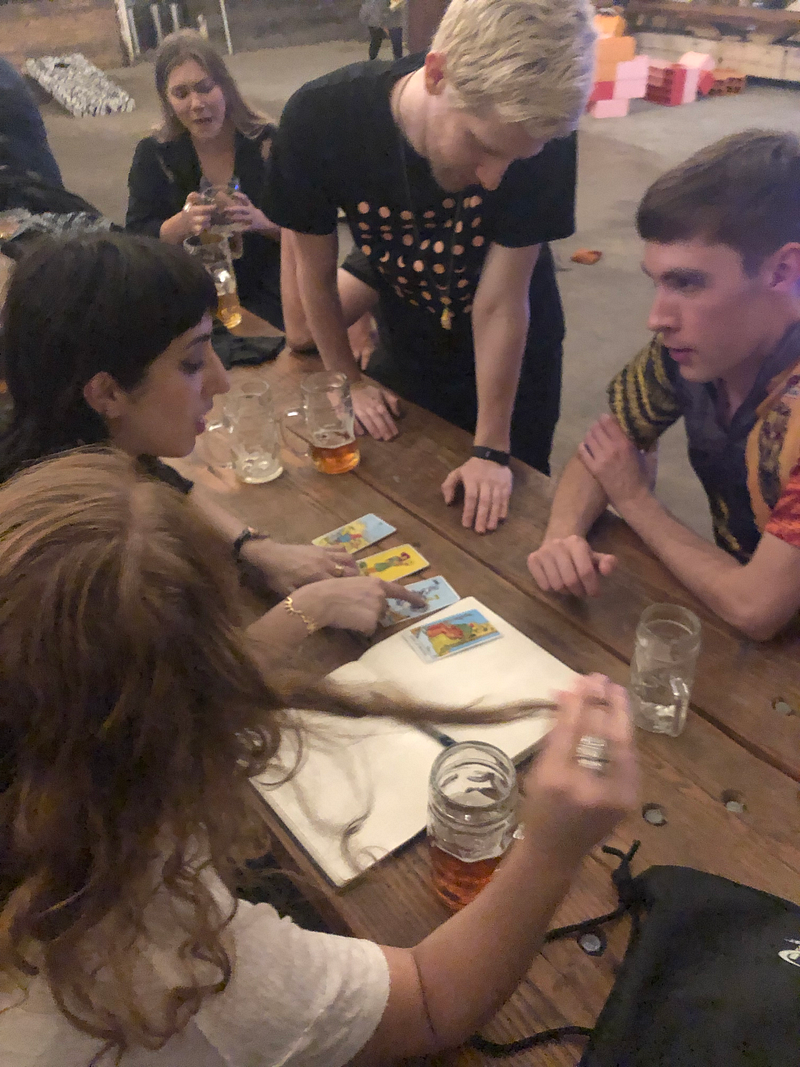Games & Joy: Tarot Comics

For my ruleset to generate an aesthetic outcome, I drew from a class I took last year, Alison Parrish’s Electronic Rituals. Using Tarot cards both as a source of randomness and a source of inspiration turned into a bit of an obsession for me over the course of that class, so I thought they’d work perfectly here. I struggled with coming up with a ruleset that might work: I thought of composing stories, poems, making some sort of competitive game ( I even came up with a full ruleset involving lines and graph paper, but it felt derivative). Ultimately I settled on a comic, mirroring the form of the cards themselves. The ruleset is as follows:
- For two or more people, I draw a Tarot card at random.
- The group must draw a comic with as many panels as they are players. Each person must draw one panel, and they must each incorporate their Tarot card into their panel.
I thought I’d leave it as open-ended as possible, so I left it there. Luckily, this past Friday provided the perfect opportunity for playtesting. A good friend of mine who’s a games journalist had a birthday party at Queens Brewery in Ridgewood, so there were plenty of willing parties to playtest my game. I tested it four times, although by the fourth time enough steins had been consumed that I didn’t take very good notes and thus will not include it in this blog post. Ultimately people seemed to enjoy the ruleset, often in spite of the rules I’d so carefully crafted.
In each group, I documented the playing process, results, then interviewed them about the game, asking them what they thought the rules were and to explain the result.
Playtest 1

This group followed the rules perfectly. They took about twenty minutes, ending up coming up with a story structure where each panel reflected one of their cards — the story of a medieval knight. They took the game the way I’d initially intended it, with a collaborative play-style resulting in the creation of an original narrative.
Playtest 2



This group completely disregarded half of my rules, but they may have had the most fun doing so: they created an alignment chart, arguing that each card represented a pole on the chart. Only one of them filled out the chart (disregarding my rule that each player must fill out a panel, and include their own card in it), but they spent about thirty minutes debating the contents: we were at an open mic night, so they decided to put each band/song being covered somewhere on the alignment chart.
This resulted in a very different play style, and very different output, since most of it was spent yelling about whether or not Green Day could be considered good.
One of the more interesting effects was on me: at one point I couldn’t stop myself from clarifying the rules — although it was too late to change that they had been broken. Even when people are having more fun without them, it’s hard to let go of a ruleset you’ve made.
Playtest 3
After the debacle that was the last playtest, I decided to record myself saying the rules to see if I was bungling them. I didn’t.
This group was a nice combination of the prior two: they made a clear narrative story, but decided to go with something a little more whimsical and metaphorical than the first group.


This one had a bit more of an Exquisite Corpse feel to it: each person seemed to take the story in their own direction when it came their turn to draw, although it did form a coherent narrative.
Takeaways
Ultimately, this went about as well as I could have hoped. It was a great excuse for a group of adults to get together and do something they wouldn’t have done otherwise — once you give people that space and a reason to do it, they’ll have fun. That’s the point of a ruleset like this, and I think mine was effective, even if it wasn’t always followed.